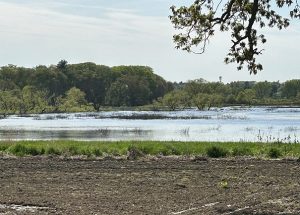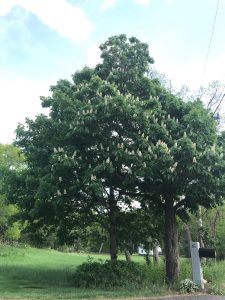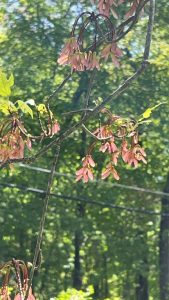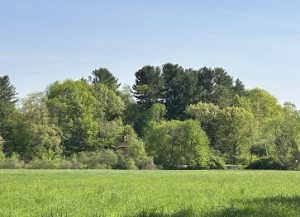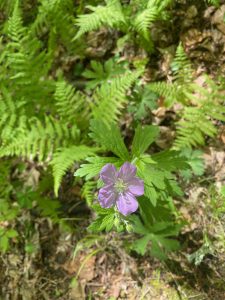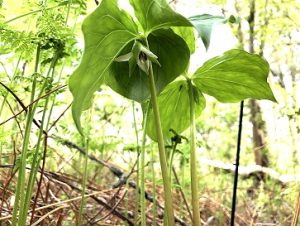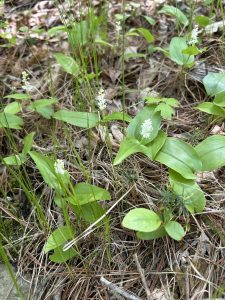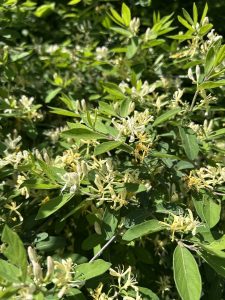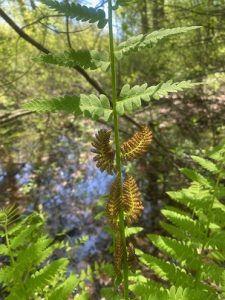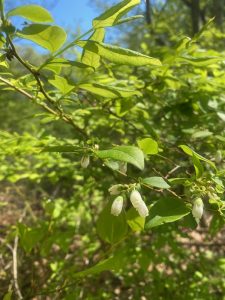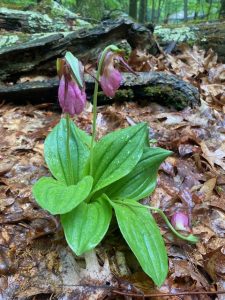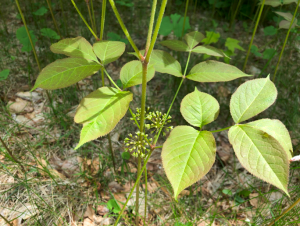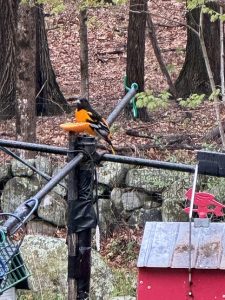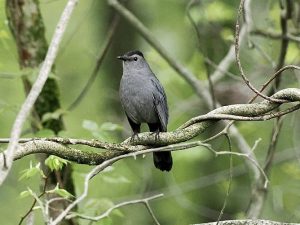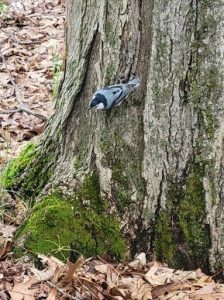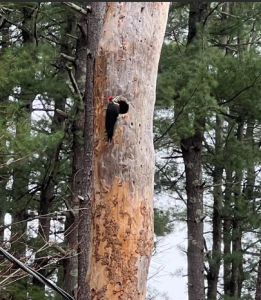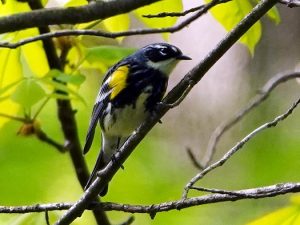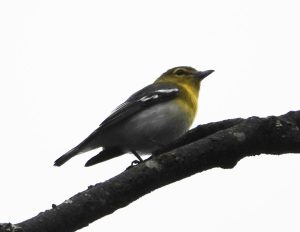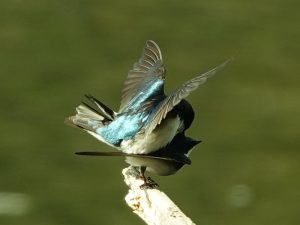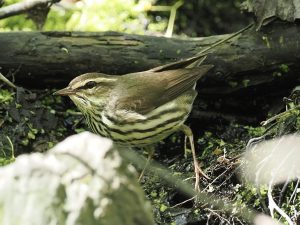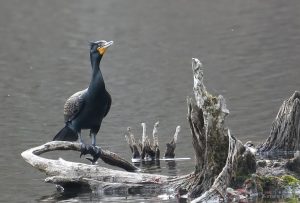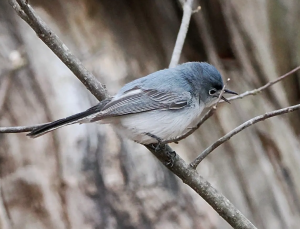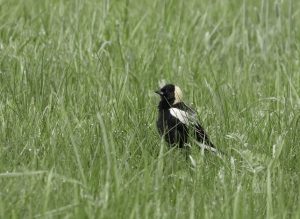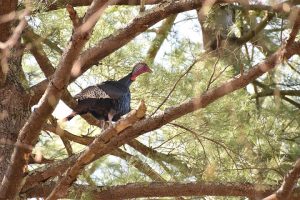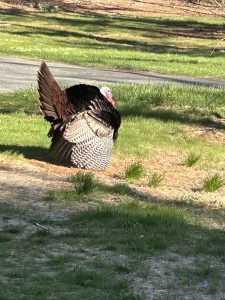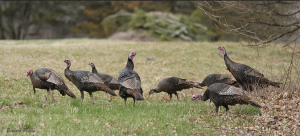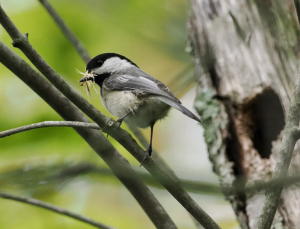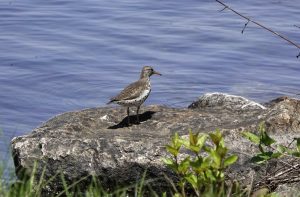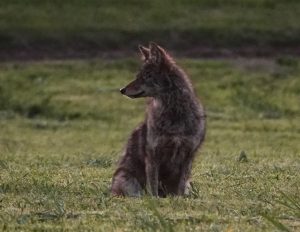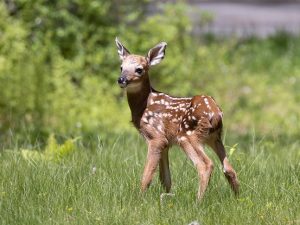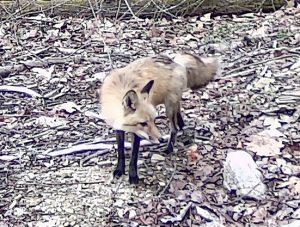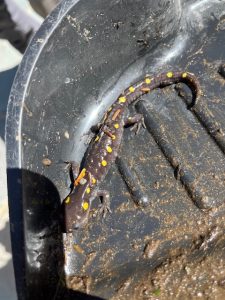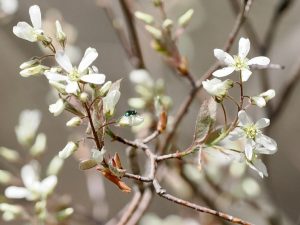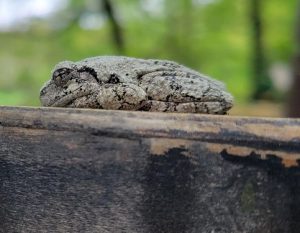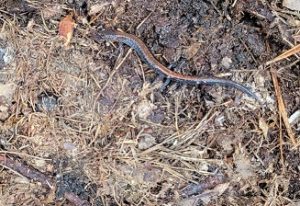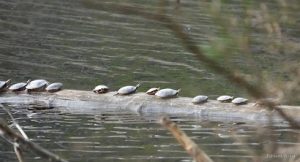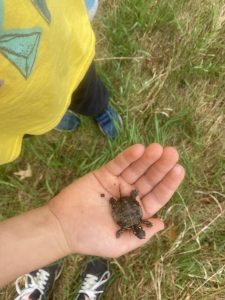Written by Gwyn Loud for the Lincoln Land Conservation Trust. She welcomes your sightings and questions at 781-259-8690 or gwynloud555@gmail.com
Significant rain over the past month has lead the official status of drought in the Northeast region of MA to be lowered to “mild drought”. Ponds are full, streams and brooks are flowing fast, and plentiful rain has spurred plants of all kinds to burst into leaf or flower. This is the month to relish the bright greens of spring; the color will change to deeper shades as we go through the rest of the season and on into summer.
Most deciduous trees have leafed out by now, with black locusts and oaks being among the last, as usual. Catalpas, such as the twisted tree by the Library, are also late leafers (I made up that word). Red maple samaras have looked pinkish recently, and will soon come twirling to the ground like little helicopters. Pine pollen is starting to float through the air, coating cars and many surfaces, and leaving swirls of yellow on puddles. People with allergies are well aware of wind-blown pollen from various trees and grasses. Horse chestnut trees are in bloom, as are shrubs such as shadbush, honeysuckle, and low-bush blueberry. Along roadsides the flowers of celandine (yellow) and wild geranium (pink) add spots of color, and low-growing plants such as violets, ground ivy and ajuga add purple to the palette. I appreciate the dots of gold in my lawn, thanks to dandelions, buttercups, and cinquefoil. In the woods you may find jack-in-the pulpit and wild sarsaparilla, with Canada mayflower (aka wild lily-of-the valley) carpeting many areas of the woodland floor. A friend found a nodding trillium, and pink lady’s slippers are always a treasure to discover. Garlic mustard (invasive) is in full flower and should be pulled before it sets seed. Poison ivy is flourishing too; the shiny young leaves show a reddish tinge at this stage.
Speaking of lawns, to repeat a quote from an earlier column, Tim Traver wrote in The Outside Story, “Some 50 million acres of the American landscape is covered by lawn, and Americans spend an estimated $100 billion or more each year on lawn care. Yes, there’s beauty in these manicured spaces. But there’s also significant environmental cost in this age of climate four alarm bells. In recent decades – citing the use of fossil fuels, water use, the damaging runoff of fertilizers, and the detriment of insecticides – many have begun to rethink the mighty lawn.” Allowing parts of our property to stay wild, or at least be mowed less often, is a win-win for the health of the ecosystem and your budget.
Our favorite summer avian residents have arrived from points south. Ruby-throated hummingbirds and chipping sparrows returned right “on time” and male Baltimore orioles, indigo buntings, rose-breasted grosbeaks, and scarlet tanagers win prizes for color. Numerous wood warblers in spring finery, always sought-after by birders, have been spotted, including palm, pine yellow-rumped, American redstart, Nashville, chestnut-sided, magnolia, yellow, black-and-white, black-throated green, black-throated blue, common yellowthroat, blue-winged, and Northern parula. More elusive birds seen or heard recently include ovenbirds, a blue-gray gnatcatcher, warbling vireos, great-crested flycatchers, Virginia rails, a Northern waterthrush, and two spotted sandpipers near the pump house at Flint’s Pond, where common loons nested last year. It remains to be seen whether the loons will return. An Eastern meadowlark and bobolink were seen in fields near Hanscom and we hope that more bobolinks will return to Farm Meadow and Drumlin Farm. Fish crows, giving a nasal “caaw caaw” are becoming more numerous and gray catbirds seem plentiful.
Wild turkeys have been anything but elusive, parading around in flocks or pairs, with toms giving frequent mating displays, hoping the hens will be enticed.
The world around us is filled with bird song, and one species which tries to “do it all” is the Northern mockingbird. To quote Cornell’s All About Birds. “Both male and female mockingbirds sing. They often mimic the sounds of birds (and frogs) around them, including shrikes, blackbirds, orioles, killdeer, jays, hawks, and many others. They go on learning new sounds throughout their lives. The song is a long series of phrases, with each phrase repeated 2-6 times before shifting to a new sound; the songs can go on for 20 seconds or more. Many of the phrases are whistled, but mockingbirds also make sharp rasps, scolds, and trills. Unmated males are the most insistent singers, carrying on late all day and late into the night. Click below to hear Norman Levey’s recording of a local mockingbird.
This is prime nesting season for birds, and each species makes a distinctive nest, primarily from instinct. Ongoing research, however, reveals that birds may also learn by watching more experienced birds, and experimenting with materials. The house wrens I have been observing know that cramming a pile of twigs in the bird house is the way to go and will appeal to a female. At least there is a bit of soft grass in the bottom for the eggs. Barn swallows, nesting in my neighbors’ barn, scoop mud from the edge of puddles to help plaster their nests to a wall. A number of birds, including chickadees and tufted titmice, build nests in tree cavities, often making use of holes previously made by woodpeckers. I have been watching a pair of pileated woodpeckers making a nest high in the dead trunk of a pine tree right along the road. The adults, working from inside, have littered the ground with the bits of wood they toss out of the cavity. Sometimes birds nest in odd places. For example, a pair of Carolina wrens, as they did last year, built a nest in my bike helmet, which was left in the basket of my bike, and house finches often nest in old wreaths hanging on a door.
Many of our common mammals are rearing young at this season. The white-tailed deer doe, after six to seven months of gestation, gives birth to one -or more often, two – fawns with a half hour of labor, and within an hour of birth the fawns can stand on wobbly legs. The fawns mostly lie still for several days and the doe stays away as much as possible to avoid attracting predators to the young. She returns to nurse, however, as often as eight to ten times in a 24-hour period. Sometimes well-intentioned humans come across a fawn lying in the grass, think it is abandoned, and try to “rescue it”. Not to worry! Mom is not far away, keeping an eye on her young. At about two weeks of age the fawn twins start playing with each other and a week later begin eating grass. Throughout the early months the spots on the fawns help camouflage them.
Observers have reported seeing mink, raccoons, rabbits, an opossum, beavers, woodchuck, coyotes, a skunk, red foxes, and weasels (one was carrying a baby rabbit). Fox kits are now old enough to emerge from the den and they are gradually weaned as they accompany their mother and learn to hunt for food. People rarely write to me about squirrels and chipmunks, probably because they are so common!
Our Conservation Ranger, Will Leona, reports seeing lots of snakes and turtles. Since they are cold-blooded they need to warm up by basking in the sun. We are approaching the season when we may find snapping turtles crossing roads to look for places to dig a nest. Please drive carefully! Neighborhood children found a baby painted turtle and took it carefully to the nearest pond. Some painted turtles which hatch in the early fall choose to over-winter in the nest, which was the case with this one.
Wood frog tadpoles should have legs by now and are preparing to leave the ponds. I heard American toads trilling their breeding songs around Patriots’ Day and they laid their eggs in long strings looking like black necklaces. Green tree frogs are starting to call, and on a recent warm day I heard my first bullfrog give its deep “jug-a-rum”. Spotted salamanders, after laying eggs in vernal pools, are back in the woods, living in camp places such as under logs or under leaf litter. Paula Robinson found one in a drain and put it carefully in the woods.
In the world of insects we are starting to see butterflies. A Woods End Road resident spotted a monarch; Journey North maps show the progress of monarchs as they make their way north from their wintering grounds in Mexico. Cabbage whites have been flitting around, a tiger-swallowtail was reported, and I spotted a little blue butterfly in April, most likely a species of Azure, one of the earliest butterflies to appear in spring. A woolly bear caterpillar was on my driveway, surely headed to spin a cocoon soon. The woolly bear, unlike most caterpillars, over-winters as a larva and after two-three weeks in its cocoon, will emerge as an Isabella tiger moth. Bees of various species are busy pollinating flowers in the wild and in our gardens, also rearing young.
Black flies are out and be sure to check for ticks, which are plentiful at this season.
Links
Listen to Norm Leveys’ recording of Northern Mockingbird singing


